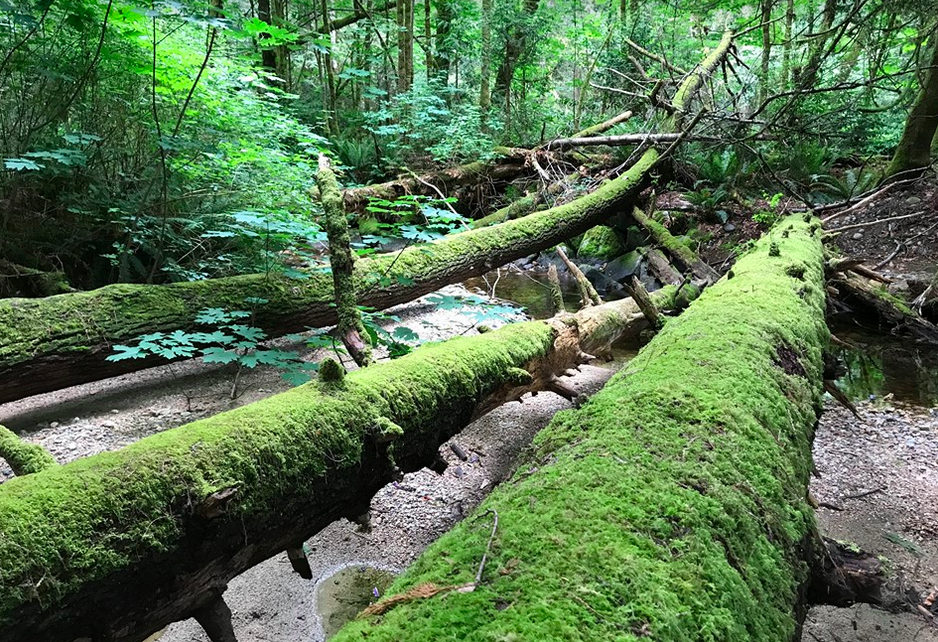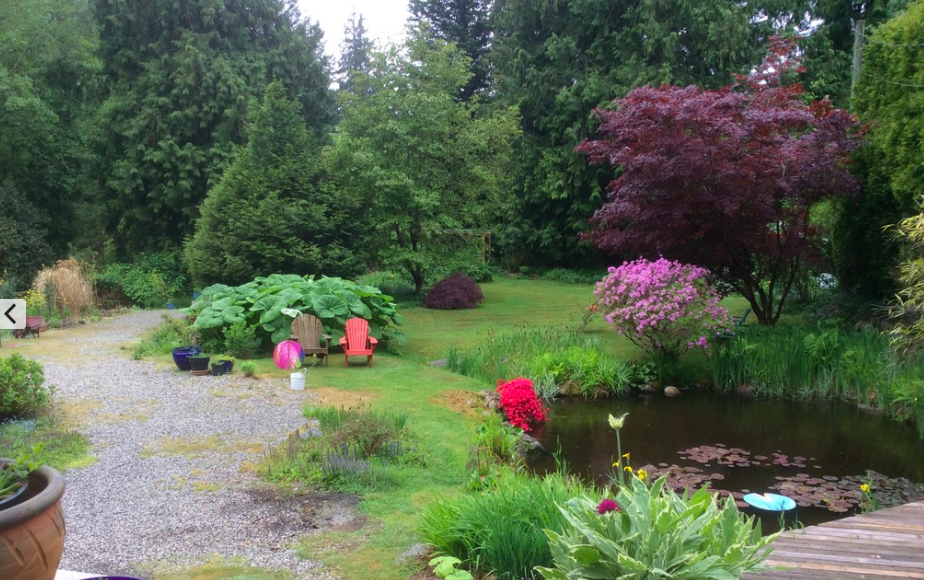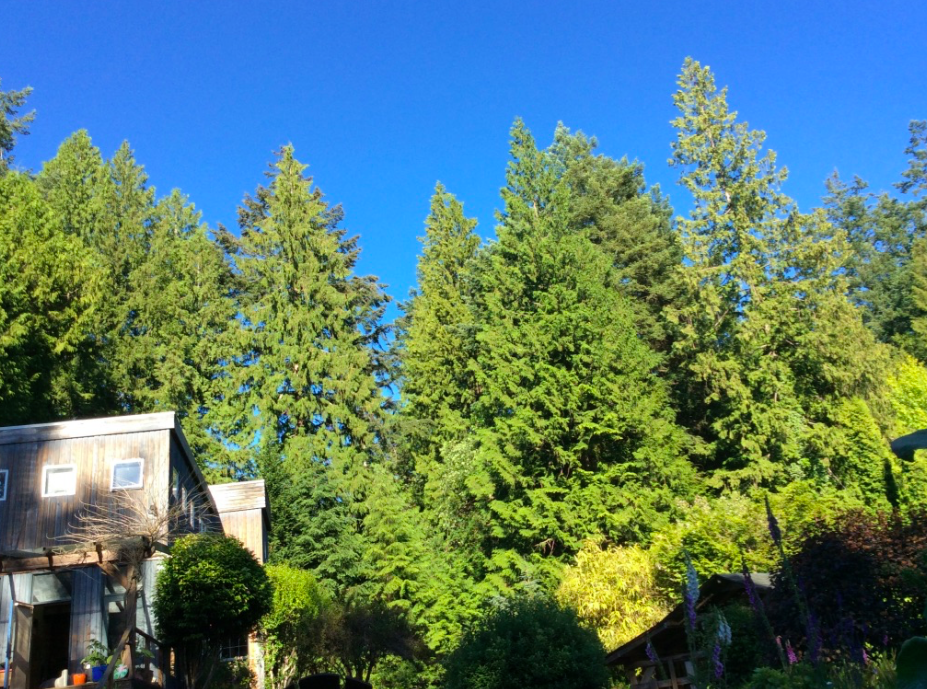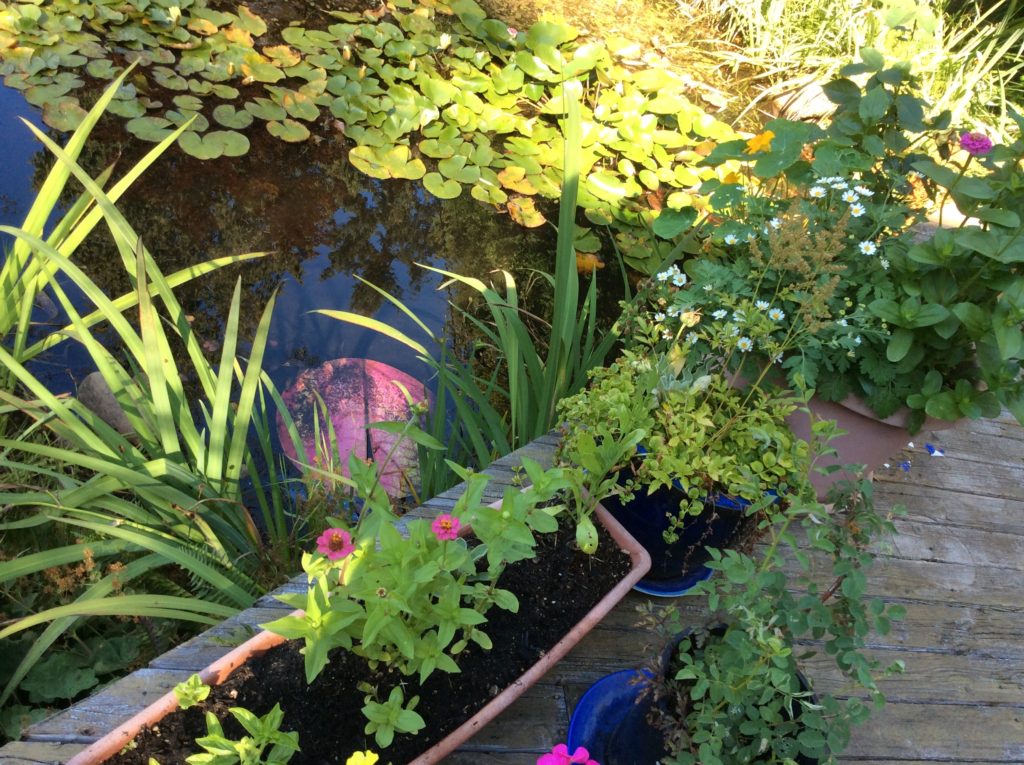The Community of Roberts Creek is under pressure to be all things to all people
With my earplugs in, I can hear the beating of my heart and the low grind of the earth digger. It’s hot, but I can’t get upwind of the noise – it’s everywhere – so the windows are staying shut.
And today, crispy, dry summery today both neighbors on my unpaved, newly formed cul-de-sac have decided to burn the excess wood left over from the building of their new homes. It’s Sunday. Even if I could stand the noise, the smoke would force me back inside.
This is not at all what I bargained for.
You have to take a ferry to get to where I live. And here, there are still trees. Cedars, mountain hemlock and alders, alders, everywhere. There are ferns, every kind of fern and real sphagnum moss under the trees. And in the spring, foxglove grows wild in the ditches and along the highway. Here, you can still find seashells at the seashore, and for the first time in my life, in one day, I stared down a bald eagle and watched, a real, live woodpecker poking for bugs in a dead tree.
This is The Sunshine Coast. When we moved here a year ago, we were escaping high housing costs, high crime, high anxiety. Today with the noise and the heat and daily evidence of trees being cut down – another parking lot, another burning pile of construction debris – it feels like we were born lemmings and we’re just rounding the corner to take that last leap into the ocean.
The Sunshine Coast is one of the fastest developing areas in B.C. Real estate professionals an condo developers hype the beauty of this gentle, breathtaking country-side, but just off the boat, on ‘the strip’ between Gibsons and Sechelt, there are two malls screaming at the top of their neon lungs over acres of parking lot.
B & K soils cleared and flattened and bulldozed every living thing on, I’d guess, three acres to start up a business of selling fertilizer, gravel, rocks and topsoil. A propane business felled some beautiful trees at the edge of their plot, and now we get to look at the ugly tank and building and signage as we drive by. Business by business, the beauty here is being picked away, chipped at, scraped over.
Greenpeace says that every minute more than 100 acres of irreplaceable rainforest are lost to bulldozers and chainsaws, and at the current rate of destruction, all the world’s tropical rainforests could be gone in 30 years.
But I live in BC, on the Sunshine Coast, home of Canada’s oldest known tree stump:1,700 years of a living being, felled in 1985 by modern “harvesting” methods, and I’m beginning to wonder about the statistics in our better educated, non Third World country.
The newspapers tell us that the Lower Mainland is going to develop like Los Angeles in the next decade or so. A lot of mouths are watering over the figures. Those Who Would Profit are poised to build the ‘infrastructure’ of roads and sewers and golf courses for the onslaught of rushing escapers just like me.
In my new home, away from the sirens and smog of the city, the sound of a low flying airplane invades my Sunday afternoon, just like the churning of my neighbor’s suburban lawn-mowing machine.
Here, it’s more obvious: it feels like war has broken out. Here, the beauty is so aching, the loss of it, however small, hits you in a flash: there’s nowhere to go where Coca-Cola – and all it represents – has not gone first.
The question presents itself over and over: how can recent urban escapers justify closing the door to other – now that they’ve found their piece of paradise? And yet: how can they retain their piece of paradise when everyone else is looking for it in their own backyard?
In the unincorporated township of Roberts Creek, where I live, the gumboot is the symbol of the fiercely environmental local community who kick and scream when government bureaucracies tell them how to widen their roads or put pesticides on their greenery. Their credo is simple: No. No compromise. No interference. No, we don’t want whatever you’re selling.
Last spring, in response to the pressures of growth and development in the area, local residents gathered to formulate a 20-year plan for the community, to replace the existing – and outdated – “official settlement plan”.
Meetings every other Wednesday discussed how everything, from signs on the highway to restrictions on tree cutting to vinyl siding affects the rural nature of Roberts Creek. There were players on both sides – those who are pushing for maximum commercial development and those who want it to stay the way it was. The latter seem to have their way more often than not.
Not everything is possible, however. The functional bureaucratic reality is that an official community plan is just a guideline for the passage of bylaws, and in the end must be approved by a number of ministries before being adopted.
In fact, “the only thing the OCP really gives us power over is land use,” says Brett McGillivray, director of Roberts Creek for the Sunshine Coast regional district. “And even then, within some well-defined boundaries. But within that, we can be effective: what size lots we want, the types of zoning we have and what’s allowed on those lots, what is commercial and what is not. Land use is everything.
Land use that fits into a cohesive plan, that is.
“People come to the regional board and say, ‘This development is going to be the greatest thing.’ And if there’s no plan to guide their decision, the board can’t justify saying no. Each one of those businesses is individually justified and bit by bit, it’s one long strip.
“Powell River is a great example of virtually no planning,” he says. “The good news in Powell River is that you can do whatever you want on your land. The bad news is, so can your neighbor.”
The good news about Roberts Creek is bad news to some: not everything is possible here.
“Because of our minimum lot size, in 10 years Roberts Creek will be a fully developed ares,” McGillivray says. “As a community we’re saying, ‘There is a limit to growth.’ We’re not pulling up the drawbridge, we’re just saying, we don’t want to become another urban landscape.”
Is suburban inevitable? Some of the people of Roberts Creek want to prove that it’s not. And they’re developing a process that redefines the notion of progress while forming a model for community empowerment. Part of their strategy includes a ‘healthy community” study.
“From one side of the Sunshine Coast to the another, we’ve answered the question: What kind of community do you want in the year 2020? The community of Roberts Creek says we want to have this place as a rural area, that’s what we want. We want a bus system, things for teenagers to do bike paths, a healthy environment. You turn around and say to government, ‘Here are our value systems, respect them.’”
Can a government respect anything but it own modus operandi? That is exactly the challenge from the Creekers to government.
At one OCP meeting, discussion centered on limitations to road access from the highway. Someone asked: “Can we specify the number of lanes on the highway?”
Bob Patrick, a regional district planner, said, “You can’t go around telling the ministry of highways how to do their job.”
“I think we can,” interjected McGillivray. And the room broke into spontaneous applause.
“We’re at a point in history where there is such incredible cynicism and, if anything, disrespect for politicians and senior government, and for very good reasons,” says McGillivray. “They’re not to be trusted. Ultimately, what’s happening is more and more of the decision-making power is coming down to the local level, because it makes sense. If there’s an accountable level of government, it’s there – when the phone rings, someone has to answer it.”
Finally the earth digger grinds to a halt. As I take out my earplugs, I wonder, ultimately, what this community will look like in 10 years. How will the ministries who must approve the OCP respond to it? Will the rest of the community endorse it? Which commercial interests will have their way?
Like many undeveloped communities across B.C., Roberts Creek is feeling the pressure to be all things to all people. Meeting by meeting, decision by decision, I’ve come to understand that Creekers are not closing the doors to anyone. They’re just trying to keep their community the way it already is – a rural area.
But in the face of conflicting interests and the deeply ingrained notion of progress, how much difference to their own future can these people really make?
The official community plan for Roberts Creek has had two readings and has been referred to a variety of government ministries. Commercial enterprises whose interests are in conflict with the plan have already begun to register their positions.
A vote will probably be taken at the November elections. The decisions made will then affect the tone and reality of the community for years to come.
-Article written by Caitlin Hicks, published in the Vancouver Sun, 1993.
–Photos from 2019, one property in Roberts Creek. This peaceful landscape, habitat of birds, fish, frogs, insects, deer, which has grown and flourished over the past 26 years, is now threatened with suburbia: managers & owner of the 2 acre property behind this half acre, (Originally a 5 acre forest) are in process to change 2 by-laws so they can subdivide. The subdivision would double the density — with the possibility of 3 additional full-size houses (to a maximum of 32,000 square feet allowed) with the change of by-laws.








